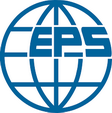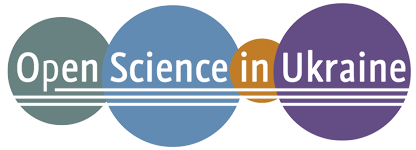Energy bands splitting with interlayer broadening in Bi2Te3<Ni>
DOI:
https://doi.org/10.15330/pcss.26.1.100-104Keywords:
energy bands, self-organization, magnetoresistance oscillationAbstract
As a result of the developed technology, an ordered array of nanoislands was formed in the process of self-organization on the Bi2Te3<Ni> (0001) plane. Penetrating mainly into the interlayer space impurities create bulk periodic superstructures, and consisting of arrays of nanoislands between packet of layers, which, as a result, move apart. The symmetry of the Bi2Te3 crystal forbids the mixing of the states │s> and │dzƞ> with │px> and │py>, and │dzƞ > with the other d-states at high-symmetry points of the Brillouin zone, while mixing of all states is allowed at low-symmetry points. As a result, an increase in the potential barrier due interlayer broadening is accompanied by a shift and splitting (∆E~20 meV) of some bands and the formation of an energy gap.
References
S.Sh. Kahramanov. Self-intercalation in Bi2Te3. Inorganic Materials. 44(1), 13 (2008); https://doi.org/10.1134/S0020168508010032.
B.M. Goldsman, V.A. Kudinov. I.A. Smirnov. Poluprovodnikovye termojelektricheskie materialy na osnove Bi2Te3. Moscow: Nauka, 320 (1977). (in Russian).
G.L.Belenkii, E.Yu.Salaev, R.A.Suleimanov, N.A.Abdullayev and V.Ya. Shteinshraiber. The nature of negative linear expansion of layer crystals C, BN, GaS, GaSe, InSe. Solid State Commun, 53(11), 967-971 (1985). https://doi.org/10.1016/0038-1098(85)90470-3.
N.A. Abdullayev, R.A. Suleimanov, M.A. Aldzhanov, and L.N. Alieva. On the Role of Flexural Vibrations in Heat Transfer in Layered Crystals. Physics of the Solid State, 44(10), 1859–1863 (2002). https://doi.org/10.1134/1.1514773.
N.A. Abdullayev, S.Sh. Kahramanov, T.G. Kerimova, K.M. Mustafayeva, S.A. Nemov, Conductivity anisotropy in the doped Bi2Te3 single crystals. Semiconductors, 43(2), 145 (2009); https://doi.org/10.1134/S1063782609020043.
G.L. Belenkii, N.A. Abdullayev, V.N. Zverev, V.Ya. Shteinshraiber. Nature of the conductivity anisotropy and distinctive features in the localization of electrons in layered indium selenide. JETP LETTERS 47(10), 584-587 (1988). http://www.jetpletters.ru/ps/1097/article_16573.pdf.
A. Kundu, A. Zazunov, A.L. Yeyati, T. Martin, R. Egger. Energy spectrum and broken spin-surface locking in topological insulator quantum dots. Phys. Rev. B, 83(12), 125429 (2011); https://doi.org/10.1103/PhysRevB.83.125429.
T.V. Menshchikova, S.V. Eremeev, E.V. Chulkov. On the origin of two-dimensional electron gas states at the surface of topological insulators. JETP Letters, 94(2), 106 (2011); https://doi.org/10.1134/S0021364011140104.
M.S. Dresselhaus, G. Chen, M.Y. Tang, R.G. Yang, H. Lee, D.Z. Wang, Z.F. Ren, J.P. Fleurial, P. Gogna. New Directions for Low-Dimensional Thermoelectric Materials. Advanced Materials, 19(8), 1043 (2007); https://doi.org/10.1002/adma.200600527.
J.P. Heremans. Low-Dimensional Thermoelectricity. Acta Physica Polonica A, 108(4), 609 (2005); https://doi.org/10.12693/APhysPolA.108.609.
A.A. Balandin, O.L. Lazarenkova. Mechanism for thermoelectric figure-of-merit enhancement in regimented quantum dot superlattices. Applied Physics Letters, 82(3), 415 (2003); https://doi.org/10.1063/1.1539905.
E.V. Oleshko, V.N. Korolyshin, Quasirelativistic band structure of bismuth telluride. Sov. Phys. Solid State, 27 (9), 1723 (1985).
E.V. Oleshko, V.N. Korolyshin. Ukrainian Phys. J., 31(6), 919 (1986).
E.V. Oleshko, E.I. Veliyulin, V.N. Kozyrenko, S.Sh. Kahramanov. Characteristics of changes in the electron structure of bismuth telluride due to self-intercalation with copper. Sov.Phys. Semicond., 25(6), 647 (1991).
V.V. Sologub, A.D. Goletskaya, R.V. Parfen’ev, Some peculiarities of the Bi2Te3 valence band. Sov. Phys. Solid State, 14 (1972) 783.
V.A. Kul’bachinskii, A.Yu. Kaminskii, N. Miyajima, M. Sasaki, H. Negishi, M. Inoue, H. Kadomatsu. Quantum Hall effect in the bulk semiconductors bismuth and antimony tellurides: Proof of the existence of a current-carrier reservoir. Journal of Experimental and Theoretical Physics Letters, 70(11), 767 (1999); https://doi.org/10.1134/1.568260.
Dong-Xia Qu, Y.S. Hor, Jun Xiong , R.J. Cava, N.P. Ong. Quantum oscillations and hall anomaly of surface states in the topological insulator Bi2Te3. Science, 329 (5993), 821 (2010); https://doi.org/10.1126/science.1189792.
S.Sh. Gahramanov, Y.A. Abdullayev, H.V. Orujova, A.A. Badalov, N.A. Abdullayev. Low Dissipative State of Bi2Se3 and Bi2Te3 Surfaces. J. Surf. Investig. 18, 573–578 (2024). https://doi.org/10.1134/S1027451024700125.
M.M. Otrokov, I.I. Klimovskikh, H. Bentmann, N.A. Abdullayev et al. Prediction and observation of an antiferromagnetic topological insulator. Nature 576, 416–422 (2019). https://doi.org/10.1038/s41586-019-1840-9.
Downloads
Published
How to Cite
Issue
Section
License
Copyright (c) 2025 S.Sh. Gahramanov, H.V. Orujova, A.A. Badalov, N.A. Abdullayev

This work is licensed under a Creative Commons Attribution 3.0 Unported License.









